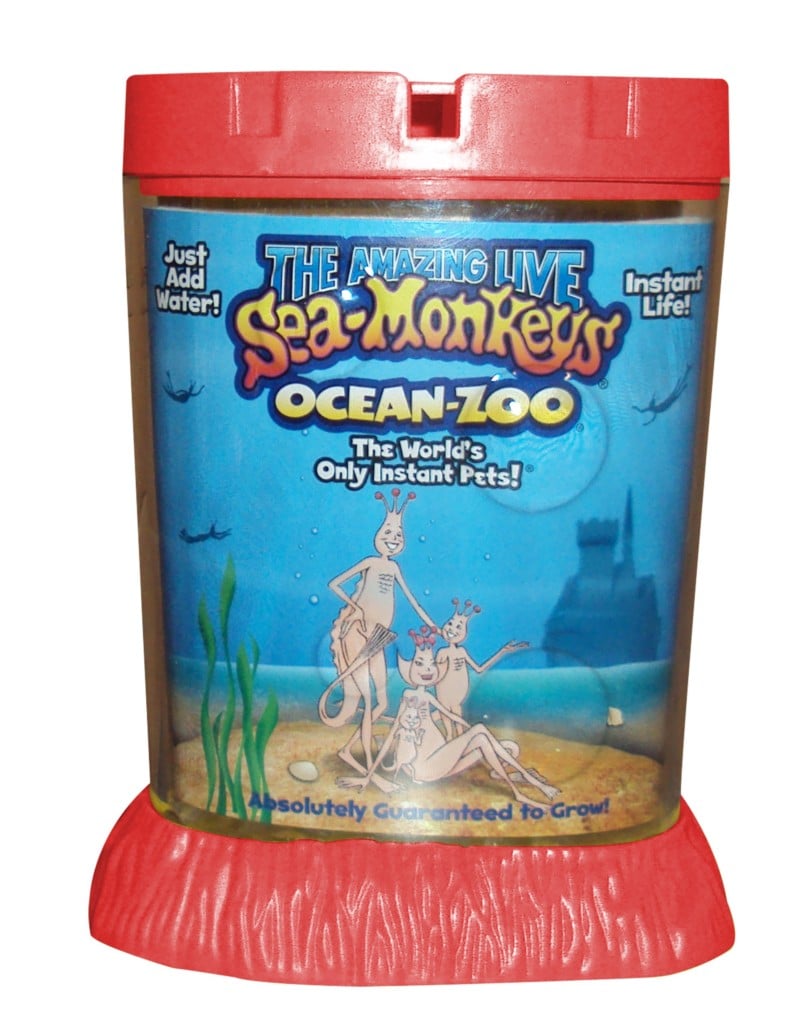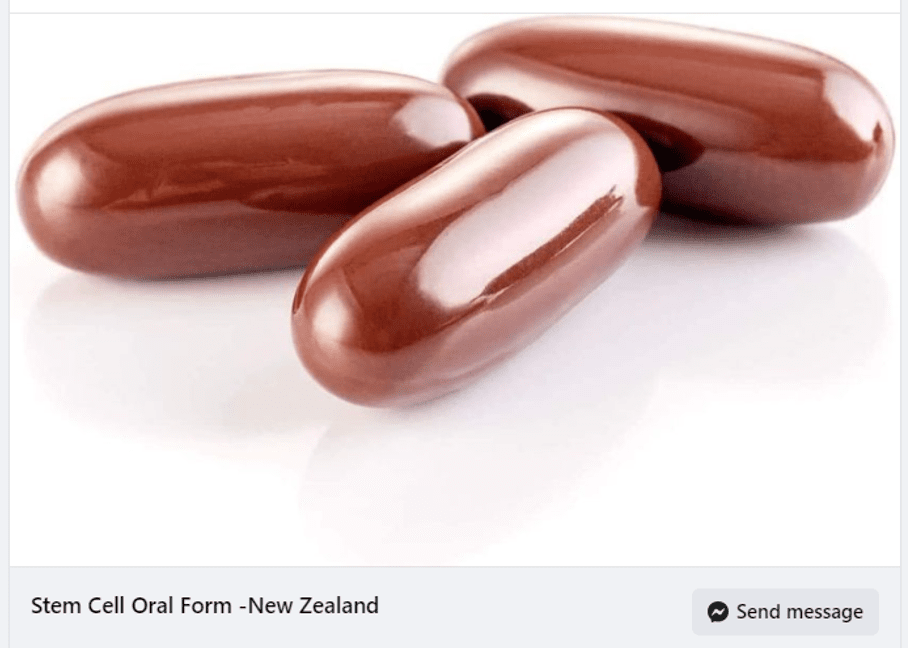Seamonkeys and Oral Stem Cell Pills from New Zealand
I used to love Sea-monkeys as a kid. They would come to life out of a little packet of dehydrated eggs when placed in seawater. An ad this week on Facebook selling oral “live” stem cell pills is claiming that a pill can repair your body using placental stem cells from deer. So is it possible that stem cells can be placed into a pill and reanimate like Sea-monkeys? Let’s dig in.
Sea-monkeys

I don’t know how many Sea-monkey kits my parents bought or that I sent away for or how many I bought for my kids, but these little guys never ceased to amaze me. You would get a little packet of “eggs” that would be added to saltwater with “food” and they would spring to life. Given that there was a little cartoon booklet of the grown Seamonkeys doing tricks and looking like they were miniature people, every morning you would wake up convinced that they were bigger and getting toward the day when you could train them. Sadly that never really happened, but I have to hand it to the guy who took brine shrimp and turned them into a multi-million dollar kid’s toy phenomenon. Only in America!
Human Cells
Sea-monkeys are able to be “hatched” from what looks like a powder because brine shrimp have evolved a mechanism to allow a form of specialized “suspended animation” when a small coastal pool dries up. However, human cells have no such abilities. When they are dehydrated, they die and become irreparably harmed. The same holds true for all mammalian stem cells. Keeping them alive requires specialized media, oxygen, and food.
The Oral Stem Cell Pill

A colleague sent me this FB ad:
“𝗪𝗵𝗮𝘁 𝗶𝘀 Oral Stem Cell?
It is live stem cells in a capsule, made possible with New Zealand’s Oral Capsule Modern Technology. It utilizes the deer placenta to provide zero-aged, fresh, and healthy cells to the body. Designed to dissolve in the small intestine, the body’s immune system will distribute these new cells to the appropriate organs in a process called “Homing”. When the declining body cells and its components (especially the nuclei and mitochondria) which are still intact, receive the new cells – our organ cells begin to regenerate and return to functioning effectively, revitalizing the body to a healthier, fresher and more energetic state.”
These pills have a long list of problems they can treat:
“Basically, stem cells can be used to:
– Grow new cells to replace damaged organs or tissues
– Correct parts of organs that don’t work properly
– Reverse Baldness/Hair loss
– Boost Immune System
– Reverse Blindness/Eye problem
– Erase wrinkle and signs of ageing
– Repair damage from heart attack
– Prevent/Heal heart disease
– Help heal Osteoarthritis and Rheumatoid Arthritis
– Prevent/Heal deterioration of the brain, heart, kidney, lungs, liver, and digestive organs
– Repair Spinal Cord Injury and Multiple Sclerosis
– Repair Brain damage from Stroke, Alzheimer’s, Parkinson’s
– Reverse Deafness/Hearing loss
– Help heal various types of Cancer
– Heal wounds/injuries
– Reverse Muscular Dystrophy
– Help treat Diabetes
– Reverse Crohn’s disease
– Learning defects
– Erectile Dysfunction
– Reproductive Health Problems
– COPD
– Hypertension
– Prostate disease
– Cirrhosis
– Disturbances of menopause
– Chronic pain
– Migraine
– Headaches
– Neuralgia
– Back pain
– Sciatica
– Psoriasis
– Leukemia
– Fight off COVID-19″
Wow, that’s impressive!
So let’s dive deeper into the dehydrated stem cell claim. While certain bacterial spores have evolved the ability to be dehydrated and still survive, mammalian cells do not have this capability (1). In fact, when a mammalian cell loses water, without the protective coating of a bacterial spore, the cell shrinks, and eventually, irreversible damage occurs to the cell wall and its organelles. Hence, once you remove the water from, in this case, a deer placental stem cell, that cell can’t be rehydrated and survive. If you add water you just get a dead stem cell.
Can a dead cell “home” as claimed above? Nope. If anything it would just be digested by the small intestine. While living stem cells can play all sorts of games with the immune system to “hide” (immuno-evasive) a dead stem cell can’t do that. So rather than distributing these dead stem cells to other parts of the body, if the dead stem cell escaped its fate of being broken down by digestive enzymes in the small intestine, the immune system would mark it as foreign and it would be destroyed.
So are any of the above claims of living stem cells in this capsule from deer placentas being able to repair the body consistent with what we know about cell biology? Nope.
The upshot? While brine shrimp and certain bacterial spores have developed the ability to be dehydrated and rehydrated and survive, mammalian cells like stem cells have not. Hence, the idea that you could put a stem cell in a capsule and have it survive to be distributed throughout the body is ridiculous. However, I certainly enjoyed thinking about all of my pet Sea-monkeys through the years!
___________________________________________________________
(1) Plomp M, Leighton TJ, Wheeler KE, Malkin AJ. The high-resolution architecture and structural dynamics of Bacillus spores. Biophys J. 2005 Jan;88(1):603-8. doi: 10.1529/biophysj.104.049312. Epub 2004 Oct 22. PMID: 15501940; PMCID: PMC1305037.

NOTE: This blog post provides general information to help the reader better understand regenerative medicine, musculoskeletal health, and related subjects. All content provided in this blog, website, or any linked materials, including text, graphics, images, patient profiles, outcomes, and information, are not intended and should not be considered or used as a substitute for medical advice, diagnosis, or treatment. Please always consult with a professional and certified healthcare provider to discuss if a treatment is right for you.
